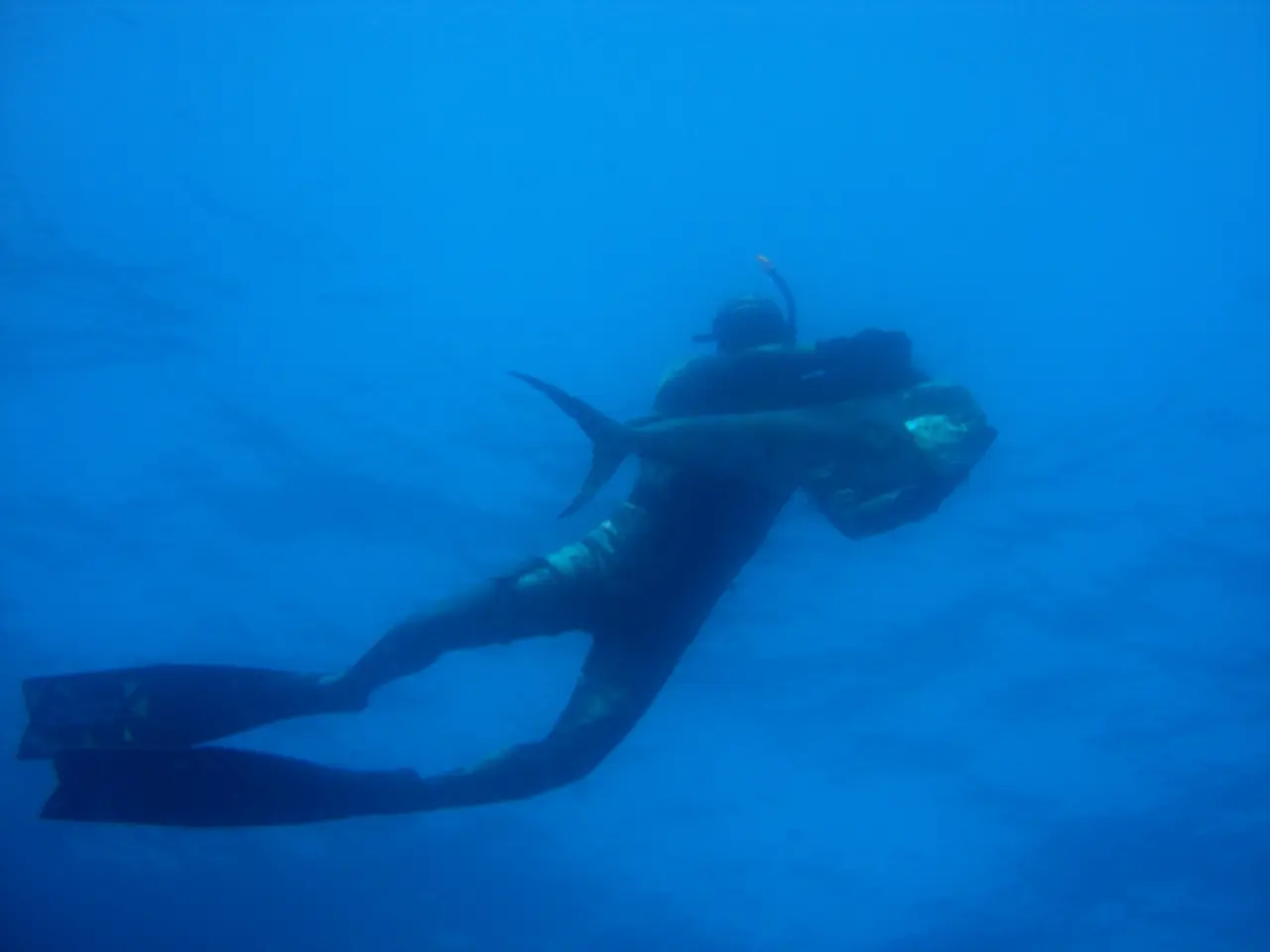Guide on Boat Diving versus Shore Diving: Making the Right Decision for Your Underwater Excursion
In the world of scuba diving, two popular methods stand out: shore diving and boat diving. Each approach offers unique advantages based on diver experience, interests, and commitment levels.
Shore Diving
Ideal for beginners and seasoned divers alike, shore diving is highly accessible as it requires only reaching a diveable shoreline. This method emphasises flexibility, cost savings, and ease for casual or frequent divers near coastlines.
Shelly Beach, for instance, provides ideal conditions for beginner divers and open water course training, with gentle sandy slopes, minimal current, and excellent protection from prevailing weather. Oak Park in Cronulla offers diverse underwater terrain, including kelp gardens, rocky swim-throughs, and sandy gutters.
Shore diving often requires good navigation skills and awareness of entry and exit conditions (e.g., currents, tides) since dive sites are accessed independently. Rugged, comfortable exposure suits designed for extended shallow water diving are necessary for this method.
One of Sydney's premier shark dive destinations, Magic Point, offers encounters with grey nurse sharks. Martin Island near Wollongong provides seasonal encounters with Australian fur seals and migrating whales during the winter months.
Sustainable shore diving practices include using established entry/exit points, avoiding contact with marine life and coral formations, and participating in local conservation efforts like underwater cleanup activities.
Boat Diving
Boat diving extends opportunities to explore remote, diverse, deep, or protected marine environments with professional support and higher costs. This method is popular among adventure-seeking divers gravitating toward challenging sites, remote locations, and encounters with large marine life impossible to reach from shore.
Boat diving offers access to different underwater worlds, each offering unique advantages based on diver experience, interests, and commitment levels. Wanderers Reef challenges experienced divers with deep profiles reaching 40 meters, while Osbourne Shoals features extensive sponge gardens and regular aggregations of schooling fish.
Montague Island provides remote wilderness diving and reliable seal encounters. Professional oversight, including trained crew members, emergency oxygen supplies, VHF radio communication with shore-based services, and detailed evacuation procedures benefit boat diving.
Advanced dive computers provide essential monitoring for deeper profiles common in boat diving. Buoyancy Control Devices with high lift capacity support deeper diving profiles in boat diving.
However, boat diving involves higher fuel consumption and emissions associated with vessel operations. It also introduces unique risks, including seasickness, potential for falls while boarding or moving about vessels, and propeller injuries.
Underwater photography enthusiasts should consider their preferred subjects when choosing between boat vs shore diving. Budget-minded divers find shore diving economically attractive for frequent diving.
Understanding and respecting marine park regulations supports long-term conservation of diving opportunities for future generations.
In summary, shore diving emphasises flexibility, cost savings, and ease for casual or frequent divers near coastlines, while boat diving extends opportunities to explore remote, diverse, deep, or protected marine environments with professional support and higher costs. Each approach suits different preferences, skill levels, and goals in scuba diving.
- For beachgoers wishing to explore the ocean's wonders, shore diving provides an accessible entry point, requiring only a reachable shoreline.
- Shelly Beach, an optimal location for beginners, offers a gentle environment with minimal current, perfect for open water course training.
- Oak Park in Cronulla, another shore diving site, boasts diverse underwater terrain, including kelp gardens, rocky swim-throughs, and sandy gutters.
- Shore diving requires good navigation skills and awareness of entry and exit conditions due to its independent access to dive sites.
- Sustainable shore diving practices include using established entry/exit points, avoiding contact with marine life and coral formations, and participating in local conservation efforts.
- Boat diving offers opportunities to explore remote, diverse marine environments with professional support, but it comes at a higher cost.
- Wanderers Reef, an example of boat diving, challenges experienced divers with deep profiles reaching 40 meters.
- Osbourne Shoals features extensive sponge gardens and regular aggregations of schooling fish, catering to adventurous divers.
- Underwater photography enthusiasts might find boat diving more advantageous due to access to unique and remote underwater worlds.
- Boat diving involves higher fuel consumption and emissions than shore diving, introducing risks such as seasickness, falls, and propeller injuries.
- Budget-minded divers might find shore diving economically attractive for frequent diving due to lower costs.
- By adhering to marine park regulations, divers support long-term conservation of diving opportunities for future generations, preserving the lifestyle, marine life, and oceanic beauty for future divers.




